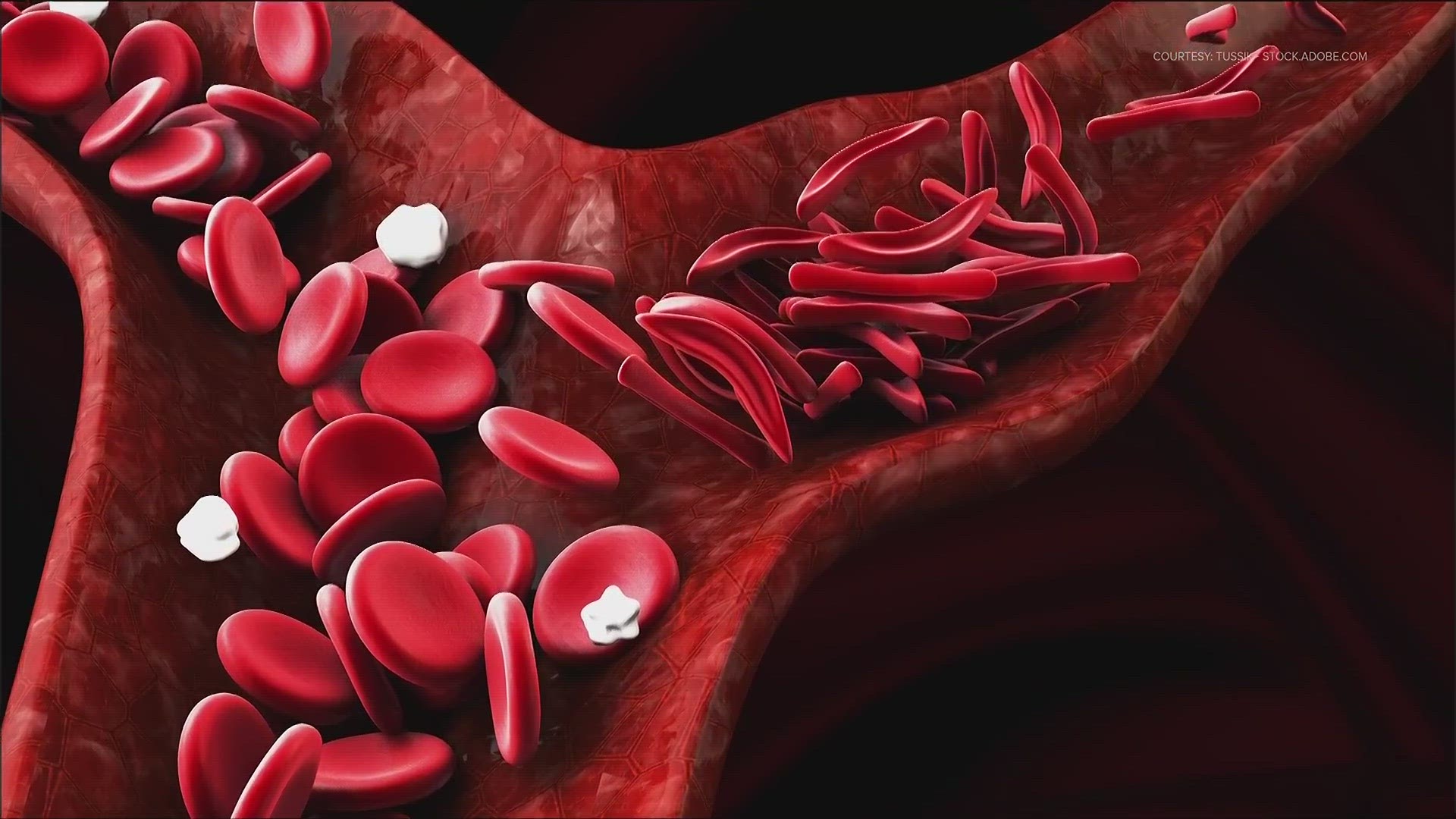ATLANTA — For the second year in a row, landmarks across Atlanta illuminated in red in honor of World Sickle Cell Day.
World Sickle Cell Day is observed annually on June 19 to increase public knowledge about the disease.
The holiday raises awareness of sickle cell disease and its challenges for those affected, according to the Sickle Cell Disease Association of America.
SCD is an inherited blood disorder that causes "sickle"-shaped red blood cells that can stick together. The red blood cells then block blood flow and oxygen from reaching parts of the body, the National Heart, Lung and Blood Institute lists on their website.
Serious problems like stroke, eye problems, infections, and pain crises can occur when there is a blockage in blood flow in the body.
"It affects patients in early childhood," explained Dr. Vivian Sheehan, a physician-scientist at Children's Healthcare of Atlanta who treats patients with SCD. "They start to develop terrible pain crises which are supposed to be as bad as unmedicated childbirth."
Sickle Cell Foundation of Georgia (SCFG) are encouraging people in Atlanta to join as they 'Shine the Light on Sickle Cell' to recognize the international awareness day.
Throughout metro Atlanta, landmarks like the 1180 Peachtree, the iconic fountain at One Atlantic Center, Atlanta City Hall and Hartsfield-Jackson Atlanta International Airport will go red to bring awareness to the disease.
They will shine the color throughout the city on both Monday and Tuesday.
The foundation reports that this event serves as a visible acknowledgment of SCD and its impact on over 100,000 Americans, including over 14,300 Georgians and six million people worldwide.
According to the Centers for Disease Control and Prevention, Georgia has the fourth largest sickle cell disease population in the U.S.
The health agency reports that four in 10 people with SCD live in the five biggest metro Atlanta counties. This includes Fulton, Gwinnett, DeKalb, Clayton, and Cobb.
The devastating blood disease has no cure and is lifelong. People with SCD that are insured have an average life expectancy of 52.6 years, as explained by the American Society of Hematology.
The blood disorder primarily impacts the Black and Hispanic communities. It affects them more because SCD occurs more often among people from parts of the world where malaria is or was common. SCD is an evolutionary trait that developed in response to help protect communities in these areas from malaria.
According to CDC data, people with SCD reported experienced discrimination with employment and receiving healthcare after revealing they had the disease.
"There is a great deal of systemic racism in the health care community. People of color receive less pain medication. They're more likely to be viewed with suspicion and misunderstanding," said Dr. Sheehan. "Patients are often afraid to go into the hospital. They're dreading those negative interactions with medical personnel and try to manage their pain at home for as long as they can."
Here are some resources for those with SCD:

